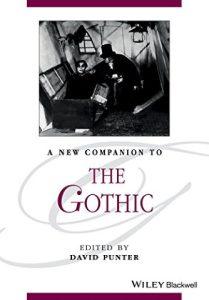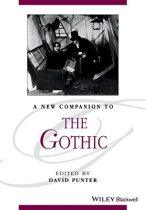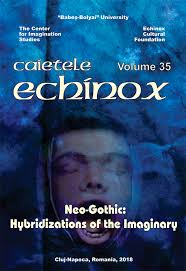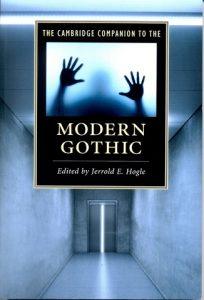
 S.P. Somtow’s novel The Other City of Angels (2008) portrays Bangkok as a Gothic metropolis: a city stuck between illusion and reality, where dreams and nightmares come to life, simultaneously backwards and modern, spiritual and material, and full of peculiarities that make one doubt whether such a place exists at all. It is a temple to consumerism filled with fortune tellers and high society serial killers that for Somtow, a composer himself, can best be expressed through the jarringly haunting sounds of Béla Bartók’s music. The Other City of Angels (2008) is a modern retelling of the Gothic tale of Bluebeard’s wife and her fatal discovery of her husband’s dark secret, and – true to its Gothic origins – it is filled with romance, terror, and laughter. This paper focuses on the novel’s comic dimension and discusses Somtow’s use of dark humour and the Gothic grotesque as a strategy to exoticize Bangkok for foreign readers by simultaneously reinforcing and defying Western stereotypes of Bangkok as the Oriental city, once (in)famously described as the city of temples and prostitutes. The paper also explores the way comic elements are used to offset the critical commentary on class division and social inequality that are seen as ingrained in the fabric of Thai culture and further aggravated by the materialism and consumerism characteristic of contemporary Thai society.
S.P. Somtow’s novel The Other City of Angels (2008) portrays Bangkok as a Gothic metropolis: a city stuck between illusion and reality, where dreams and nightmares come to life, simultaneously backwards and modern, spiritual and material, and full of peculiarities that make one doubt whether such a place exists at all. It is a temple to consumerism filled with fortune tellers and high society serial killers that for Somtow, a composer himself, can best be expressed through the jarringly haunting sounds of Béla Bartók’s music. The Other City of Angels (2008) is a modern retelling of the Gothic tale of Bluebeard’s wife and her fatal discovery of her husband’s dark secret, and – true to its Gothic origins – it is filled with romance, terror, and laughter. This paper focuses on the novel’s comic dimension and discusses Somtow’s use of dark humour and the Gothic grotesque as a strategy to exoticize Bangkok for foreign readers by simultaneously reinforcing and defying Western stereotypes of Bangkok as the Oriental city, once (in)famously described as the city of temples and prostitutes. The paper also explores the way comic elements are used to offset the critical commentary on class division and social inequality that are seen as ingrained in the fabric of Thai culture and further aggravated by the materialism and consumerism characteristic of contemporary Thai society.
 This article is my early attempt at theorising Asian Gothic. Far from offering the complete picture, it should rather be treated as an exploratory journey through some potentially gothic territories of Asian literatures. The article is limited to a part of Asia only, focusing on East, South-East and South Asia with the exclusion of Japan (as Japanese Gothic is discussed separately in the collection). The texts discussed here will only provide the reader with a very sketchy idea of the gothic dimensions of the region but hopefully this can serve as a starting point for further ruminations on the subject.
This article is my early attempt at theorising Asian Gothic. Far from offering the complete picture, it should rather be treated as an exploratory journey through some potentially gothic territories of Asian literatures. The article is limited to a part of Asia only, focusing on East, South-East and South Asia with the exclusion of Japan (as Japanese Gothic is discussed separately in the collection). The texts discussed here will only provide the reader with a very sketchy idea of the gothic dimensions of the region but hopefully this can serve as a starting point for further ruminations on the subject.


 S.P. Somtow’s novel The Other City of Angels (2008) portrays Bangkok as a Gothic metropolis: a city stuck between illusion and reality, where dreams and nightmares come to life, simultaneously backwards and modern, spiritual and material, and full of peculiarities that make one doubt whether such a place exists at all. It is a temple to consumerism filled with fortune tellers and high society serial killers that for Somtow, a composer himself, can best be expressed through the jarringly haunting sounds of Béla Bartók’s music. The Other City of Angels (2008) is a modern retelling of the Gothic tale of Bluebeard’s wife and her fatal discovery of her husband’s dark secret, and – true to its Gothic origins – it is filled with romance, terror, and laughter. This paper focuses on the novel’s comic dimension and discusses Somtow’s use of dark humour and the Gothic grotesque as a strategy to exoticize Bangkok for foreign readers by simultaneously reinforcing and defying Western stereotypes of Bangkok as the Oriental city, once (in)famously described as the city of temples and prostitutes. The paper also explores the way comic elements are used to offset the critical commentary on class division and social inequality that are seen as ingrained in the fabric of Thai culture and further aggravated by the materialism and consumerism characteristic of contemporary Thai society.
S.P. Somtow’s novel The Other City of Angels (2008) portrays Bangkok as a Gothic metropolis: a city stuck between illusion and reality, where dreams and nightmares come to life, simultaneously backwards and modern, spiritual and material, and full of peculiarities that make one doubt whether such a place exists at all. It is a temple to consumerism filled with fortune tellers and high society serial killers that for Somtow, a composer himself, can best be expressed through the jarringly haunting sounds of Béla Bartók’s music. The Other City of Angels (2008) is a modern retelling of the Gothic tale of Bluebeard’s wife and her fatal discovery of her husband’s dark secret, and – true to its Gothic origins – it is filled with romance, terror, and laughter. This paper focuses on the novel’s comic dimension and discusses Somtow’s use of dark humour and the Gothic grotesque as a strategy to exoticize Bangkok for foreign readers by simultaneously reinforcing and defying Western stereotypes of Bangkok as the Oriental city, once (in)famously described as the city of temples and prostitutes. The paper also explores the way comic elements are used to offset the critical commentary on class division and social inequality that are seen as ingrained in the fabric of Thai culture and further aggravated by the materialism and consumerism characteristic of contemporary Thai society.
 Contemporary Japanese crime writers frequently resort to gothic themes and conventions in their works. This is hardly surprising, since Japanese detective fiction, which dominated Japanese popular literature in the early twentieth century, began as a reaction to nineteenth-century gothic crime stories of writers such as Edgar Allan Poe or Arthur Conan Doyle. This article discusses crime novels of Otsuichi, Natsuo Kirino, and Fuminori Nakamura as examples of Japanese crime gothic, focusing on the Japanese conceptualisation of monstrosity in relation to the figure of the criminal, complementarity of the victim and killer characters, and aestheticisation of violence in the context of Japanese aesthetics of impermanence and imperfection.
Contemporary Japanese crime writers frequently resort to gothic themes and conventions in their works. This is hardly surprising, since Japanese detective fiction, which dominated Japanese popular literature in the early twentieth century, began as a reaction to nineteenth-century gothic crime stories of writers such as Edgar Allan Poe or Arthur Conan Doyle. This article discusses crime novels of Otsuichi, Natsuo Kirino, and Fuminori Nakamura as examples of Japanese crime gothic, focusing on the Japanese conceptualisation of monstrosity in relation to the figure of the criminal, complementarity of the victim and killer characters, and aestheticisation of violence in the context of Japanese aesthetics of impermanence and imperfection.
 The chapter argues that the search for Asian Gothic should be a three-directional quest: a re-examination of classic texts from the perspective of existing theories about the Gothic; an investigation of the concept of the Gothic from the perspective of self-defined Asian Gothic authors; and a re-categorization of some contemporary pop-cultural forms, such as film, music, manga, anime, visual arts, or street fashion as “Gothic,” leading to a further appropriation of the term by various Asian cultures. All of the above can only be achieved if we abandon the narrow understanding of the Gothic as a distinct literary genre and opt for a more flexible and multidisciplinary use of the term instead.
The chapter argues that the search for Asian Gothic should be a three-directional quest: a re-examination of classic texts from the perspective of existing theories about the Gothic; an investigation of the concept of the Gothic from the perspective of self-defined Asian Gothic authors; and a re-categorization of some contemporary pop-cultural forms, such as film, music, manga, anime, visual arts, or street fashion as “Gothic,” leading to a further appropriation of the term by various Asian cultures. All of the above can only be achieved if we abandon the narrow understanding of the Gothic as a distinct literary genre and opt for a more flexible and multidisciplinary use of the term instead.
 The chapter offers a selective survey of twenty-first-century Asian Gothic. The main focus of the discussion is the most prominent contemporary trend involving reconfigurations of Asian folklore and the ghost story. More specifically, this chapter investigates literary and film narratives dealing with individual and collective trauma that revolve around the figure of the vengeful ghost, texts which reclaim animism as inherent part of Asian modernity, and Asian Gothic’s interrogation of gender dynamics and empowered women. The first section of the essay discusses the emergence of the female vengeful ghost as the dominant figure of fear in Asian horror films. The second section examines the portrayal of ghosts in literature of the region and the way their haunting engages with historical trauma and socio-cultural anxieties of the time. The final part investigates narratives that highlight the connection of women to shamanism and magic and proposes to read female spirituality in terms of empowerment.
The chapter offers a selective survey of twenty-first-century Asian Gothic. The main focus of the discussion is the most prominent contemporary trend involving reconfigurations of Asian folklore and the ghost story. More specifically, this chapter investigates literary and film narratives dealing with individual and collective trauma that revolve around the figure of the vengeful ghost, texts which reclaim animism as inherent part of Asian modernity, and Asian Gothic’s interrogation of gender dynamics and empowered women. The first section of the essay discusses the emergence of the female vengeful ghost as the dominant figure of fear in Asian horror films. The second section examines the portrayal of ghosts in literature of the region and the way their haunting engages with historical trauma and socio-cultural anxieties of the time. The final part investigates narratives that highlight the connection of women to shamanism and magic and proposes to read female spirituality in terms of empowerment.